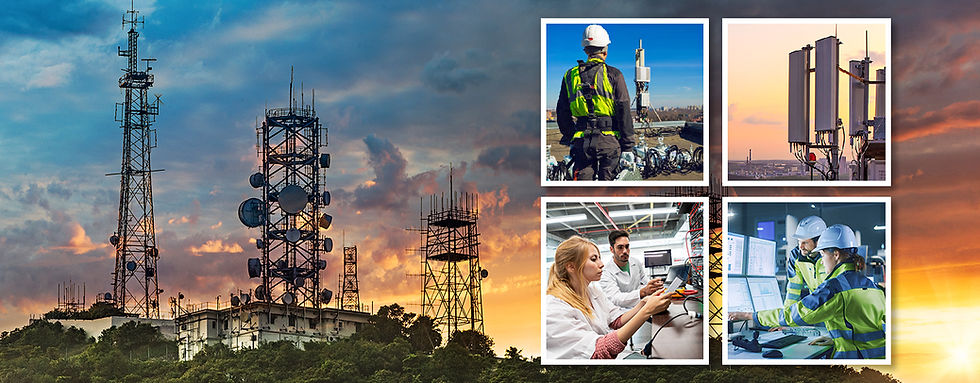Power Consumption Challenges in 5G Technology: A Barrier for Low-Income Countries
- Tien Hoang Minh
- Dec 31, 2024
- 3 min read

The rollout of 5G technology promises revolutionary changes in connectivity, offering ultra-high speeds, low latency, and the ability to support a massive number of connected devices. However, this technological leap comes with a significant challenge: power consumption. While the world marvels at 5G’s capabilities, low-income countries face unique hurdles in adopting this advanced technology due to its high energy demands.
Why Is Power Consumption a Problem in 5G?
Increased Base Station Density 5G networks require a much denser deployment of base stations than previous generations. This is necessary to support higher data rates and widespread connectivity. A 5G base station consumes up to three times more power than a 4G base station, primarily due to:
Advanced antennas like Massive MIMO (Multiple Input Multiple Output).
Higher frequency bands that demand more energy for signal processing.
Continuous Connectivity Requirements5G networks are designed for always-on connectivity, supporting applications such as IoT, smart cities, and autonomous vehicles. This constant activity increases power usage significantly.
Edge Computing and Data CentersTo minimize latency, 5G relies heavily on edge computing. The additional infrastructure for processing data locally requires more electricity, adding to the overall energy demand.
Impact on Low-Income Countries
For countries with limited financial and energy resources, the high power consumption of 5G poses several challenges:
1. Strain on Energy Grids
Many low-income countries already face unreliable electricity supplies, with frequent power outages and limited grid coverage in rural areas. Deploying 5G exacerbates these issues, as the technology demands a consistent and substantial power supply.
2. Increased Operational Costs
High power consumption leads to soaring operational costs for telecom operators. In countries where consumer affordability is low, this creates a dilemma: pass the costs to consumers or absorb them and risk financial instability.
3. Environmental Concerns
Low-income countries are often the most vulnerable to climate change. The increased energy consumption of 5G networks, especially if powered by non-renewable sources, can contribute to higher greenhouse gas emissions, further worsening environmental challenges.
4. Limited Accessibility
The high costs of deploying and maintaining 5G networks can widen the digital divide. Wealthier urban areas might enjoy 5G services, but rural and underprivileged regions could be left behind, perpetuating inequality.
Potential Solutions
Despite these challenges, there are ways to address the power consumption issue and enable low-income countries to benefit from 5G:
1. Energy-Efficient Technologies
Telecom manufacturers are developing energy-efficient hardware, such as:
Advanced sleep modes for base stations during low-traffic periods.
AI-driven energy management systems to optimize power use.
2. Renewable Energy Integration
Deploying solar, wind, or other renewable energy sources to power 5G base stations can reduce reliance on traditional grids and cut operational costs. This approach also aligns with sustainability goals.
3. Shared Infrastructure
Infrastructure sharing among telecom operators can minimize redundant installations and distribute energy costs more effectively. Governments can play a key role in facilitating such partnerships.
4. Government Subsidies and Incentives
Governments can support 5G deployment by offering subsidies for energy-efficient technologies or tax breaks for operators investing in renewable energy solutions.
5. Smart Deployment Strategies
Prioritizing 5G rollout in high-demand areas and complementing it with 4G or hybrid networks in low-demand regions can balance coverage and costs.
Conclusion
While 5G offers transformative potential, its high power consumption presents a significant barrier, particularly for low-income countries. Addressing this challenge requires a multi-faceted approach, combining technological innovation, sustainable practices, and supportive policies. Only by tackling these issues can 5G fulfill its promise of connecting the world and driving global progress.




Comments